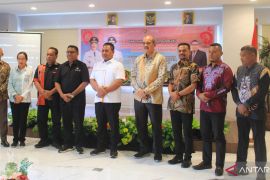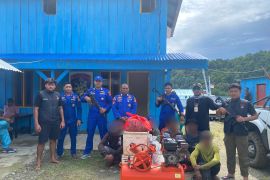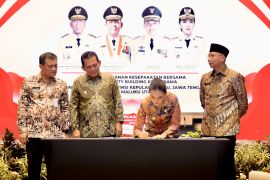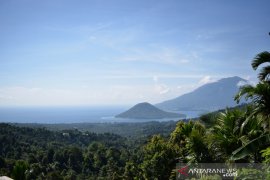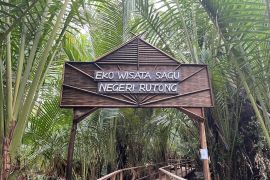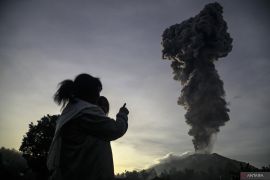To date, Maupora is still considered sacred for it is a popular rendezvous for Satan and black magic users around the world, locally known as Suanggi.
On special occasions, during a night with a new moon, Suanggi residents comes together at Maupora atoll to have a party.
Hans Lekipera, a local resident of Romang island, says the south coast of the atoll is the place where the Suanggi, or those who practice black magic, have their party in a magnificent palace that is invisible to ordinary people.
According to him, the party is usually led by the king of Sunagi who sits on a golden throne, seen everyday by ordinary people as a giant floating rock the local people call, "Watupalpiali."
"Once in a while, during a certain night with a new moon when people of the surrounding islands of Kisar, Leti and Moa see a bright light from the direction of Maupora atoll, it means the Suanggi or the black magic users around the world are having their party," Lekipera noted.
Although it sounds frightening, people are not reluctant to go snorkeling, diving, fishing, or just swimming in the waters of Maupora, while enjoying the sights of marine animals and the coral reefs of various colors.
The beauty of Maupora atoll, with its large rocks and mangrove forest along its shoreline, in addition to evergreen and sandalwood trees on the hills, makes the island a perfect tourist destination in Southwest Maluku.
"Maupora atoll can be developed as a location for marine tourism, a fishing area, diving, snorkeling, swimming and other marine activities," says Southwest Maluku District Culture and Tourism Office spokesman Anis Dahoklory.
The island, with an area of 10,490 sq km, is accessible within three hours by boat from Kisar island and about 20 minutes by speedboat to the east from Jerusu beach on Romang mainland.
When the weather is good and the waves are gentle, the journey to Maupora atoll is even faster.
"Visitors to that island can rest comfortably after playing and swimming all day on the 3-kilometer white sandy beach along its west coast," Dahoklory said.
The crystal clear water around the atoll also adds to the beauty of the beaches, and the sound of water splashing onto the shore in late afternoons will provide a memorable experience for visitors or tourists.
Marine scientists from the Netherlands, Belgium, Indonesian Institute of Sciences (LIPI), and the Agency for Assessment and Application of Technology (BPPT) have discovered that the waters around Maupora atoll are rich with coral reefs and schools of ornamental fish in various sizes and colors.
These fish, which divers enjoy in Maupora waters, include white-tippet and Clark`s anemone fish, clown fish, pearly-scaled angelfish, key-hole angelfish, triangular butterfly fish, brown butterfly fish, latticed butterfly fish, oval-spot butterfly fish, pis butterfly fish, double-saddle butterfly fish, pyramid butterfly fish, emperor angelfish, scaly damsel, regal angelfish, and Moorish idol.
Also found in Maupora waters are highly valued mollusks, such as green turban shells, giant clams, top shells and also various sea cucumbers.
No wonder marine scientists from the Netherlands and Belgium are fascinated with different findings, seen both on the land and in the waters of Maupora.
For these scientists, the uninhabited Maupora atoll is an exotic place for research and enjoyment in Maluku Barat Daya district, Maluku Province.
"We are so amazed and feel as if we were in a small piece of paradise that we have never seen before in our expeditions," said Dutch marine scientist Rob van Scheidel, as quoted by Fredy Leatemia of LIPI Ambon.
According to Fredy, marine scientists from the Netherlands and Belgium said their expedition in Maupora island would be over soon, though it will be difficult for them to leave the exotic atoll.
"We hear a lot of mystical stories that remain enigmatic on this tiny Maupora atoll, and therefore we want to know more about them from the indigenous people of Roman and Kisar islands," said Styn van Collie and Thom Gabriel of Belgium.
Styn and Thom acknowledged that they really enjoyed every moment in Maupora because they were tempted and fascinated by both its natural and marine beauties.
During their expedition in Maupora they discovered the underwater biodiversity of coral reefs.
The natural and marine environment of Maupora is a matchless underwater paradise found nowhere else in the eastern part of Indonesia, though the area seems, so far, to have been ignored by the local government and officials from the tourism industry.
Information and publications about Maupora are also virtually non-existent in print and electronic media, as well as on the internet, because for the people in MBD district, especially in Kisar and Romang islands, the island remains full of mystery.
Also, the flora and fauna on the land of Maupora have not been much explored or studied by observers and environmentalists, and much remains to be done to open the island from its isolation.
As an exotic atoll among 133 islands in Southwest Maluku, Maupora has a stunning underwater paradise to explore for domestic and foreign tourists, as well as marine lovers and scientists.
Rows of tropical forest, mangrove forests, and sandalwood forests with high economic value that flourish naturally in Maupora are the
state assets that need to be kept and preserved from illegal logging activities.
"It is time for the central and MBD district governments to focus their attention on the development of Maupora as a tourist destination in the district," Anis Dahoklory noted.
He added that Maupora should be researched and mapped as
a marine nature reserve and developed to increase state foreign revenues, in general, and Southwest Maluku people`s welfare, in particular.
"Maupora also needs to be considered by investors as a future tourism destination in Southwest Maluku district to draw tourists and marine scientists from Australia, New Zealand, and other Pacific nations," according to Dahoklory.
(O001/KR-BSR)
Reporter: Otniel Tamindael
Editor: Jafar M Sidik
Copyright © ANTARA 2012
